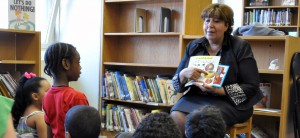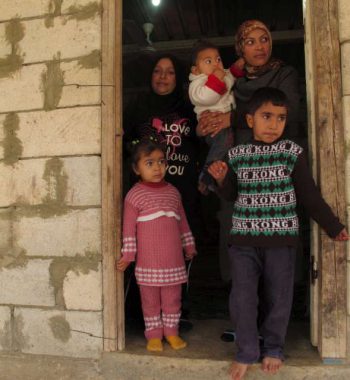The Issue
As Syria staggers into its fifth year of a brutal civil war, almost 12 million people – fully half the country’s population – are homeless, including 7 million internally displaced people inside Syria and 4 million refugees outside the country who have little hope of returning to Syria safely.
Half of those uprooted are children who have been traumatized by war, robbed of an education, forced from their homes and now live in appalling conditions in exile. Syria’s neighbours are struggling with the demands placed on them by the sudden influx of refugees. As of May 2015, there were almost 4 million registered Syrian refugees in the region, including 1.7 million in Turkey, 1.1 million in Lebanon and 600,000 in Jordan. As conditions deteriorate, with further influxes of refugees in Iraq and Egypt, the entire Middle East is threatened. Canadians can help prevent a disaster from becoming a catastrophe. Every family that we can resettle is one step closer to a resolution. Refugee sponsorship and international resettlement offer a new life to the most vulnerable; eases the burden on regional host countries and holds out the hope that international pressure might help resolve Syria’s crisis. Canada has already promised to resettle 10,000 Syrians over the next three years and is counting on private sponsors to account for a significant portion of that figure. Lifeline Syria aims to resettle at least 1,000 Syrian refugees in the Greater Toronto Area over the next two years, emulating Canada’s incredible response to the Indochinese Refugee Movement of 1979, when Canadians successfully resettled 60,000 Vietnamese “boat people”.
“Like Operation Lifeline with the boat people 35 years ago, Canadians then as now had the opportunity to demonstrate their incredible leadership indirectly assisting humanitarian efforts to save thousands of lives. The current Syrian refugee crisis is real and in many ways larger than the boat people. Governments in Canada and elsewhere can not solve this problem alone. Community sponsorship efforts are the key. Canadians are up to the challenge.”
Hon. Ron Atkey
Minister of Immigration 1979-1980
For Teachers

To help you inform your students about refugee issues – UNHCR Educational Materials for Teachers.
An educator’s guide to welcoming Syrian refugees – adaptations to make Ontario schools safe places for newcomers, and to address emotional and educational needs.
From School Mental Health-Assist – Welcoming Syrian Newcomer Students & Families to School – an excellent resource INFO-SHEET
Caring for Syrian Refugee Children: A Program Guide for Welcoming Young Children and their Families reminds early childhood educators of the unique experiences and needs of Syrian refugee children.
We are One Canada – by Canadian children to teach beginning Arabic to English speakers.
Facts & Figures
In Numbers
- In 2010, Syria’s population was just over 20 million
- 4 out of 5 Syrian refugees are women and children
- Fewer than 1% of Syria’s refugees will ever get a chance to be resettled overseas
- More than 4.5 million Syrian refugees are in just 5 countries: Turkey, Lebanon, Jordan, Iraq and Egypt
- It is estimated that more than 400,000 Syrians have died and more than 13.5 million people are in urgent need of humanitarian assistance inside Syria (more than half the country’s pre-war population)
- Nearly 5 million refugees fled Syria and at least 6 million are internally displaced
- Nearly 40,000 Syrian refugees have arrived in Canada

Timeline of Syrian Conflict
March 2011: Civil uprising begins.
April 2011: Flow of Syrian refugees to neighbouring countries begins as 2,000 cross into Turkey.
July 2012: United Nations High Commissioner for Refugees-run Zaatari refugee camp is opened in Jordan.
December 2012: UN says more than 500,000 Syrian refugees have fled by year’s end.
March 2013: UN says more than a million Syrians are now refugees. Growing numbers flee the cities of Deraa, Homs, Aleppo and Damascus.
June 2013: António Guterres, United Nations High Commissioner for Refugees, calls Syria the “worst humanitarian disaster of our era.”
December 2013: UN says by end of year 2.3 million Syrian refugees have fled into Turkey, Iraq, Jordan, Lebanon and Egypt.
August 2014: UN reports that the number of Syrian refugees has surpassed 3 million with more than a million people having fled in the last 12 months alone.
January 2016: A report from the International Organization for Migration notes 2015 as the deadliest year for immigrants and refugees
March 2016: Number of Syrian refugees arriving in Canada reaches over 26,000
September 2016: Canadian Prime Minister Justin Trudeau urges more help for Syrian refugees at UN summit in New York
January 2017: The Government of Canada announces expiry of exemption policy for Syrian and Iraqi refugees.
February 2017: Number of Syrian refugees arriving in Canada reaches over 40,000.
Plan of Action for Refugees from Syria
What steps can readily, prudently and reasonably be put in place to significantly increase the number of private sponsorships and the rate at which Syrian refugees can be enabled to arrive in Canada?
What practices in Canada can be adopted that can respond quickly and expeditiously to the leadership being demonstrated across Canada by politicians at the federal level, church figures, provincial premiers, mayors from all our major cities and the public in general?
Plan of Action for Refugees from Syria provides an answer to these questions. Please download and read the PDF document.
